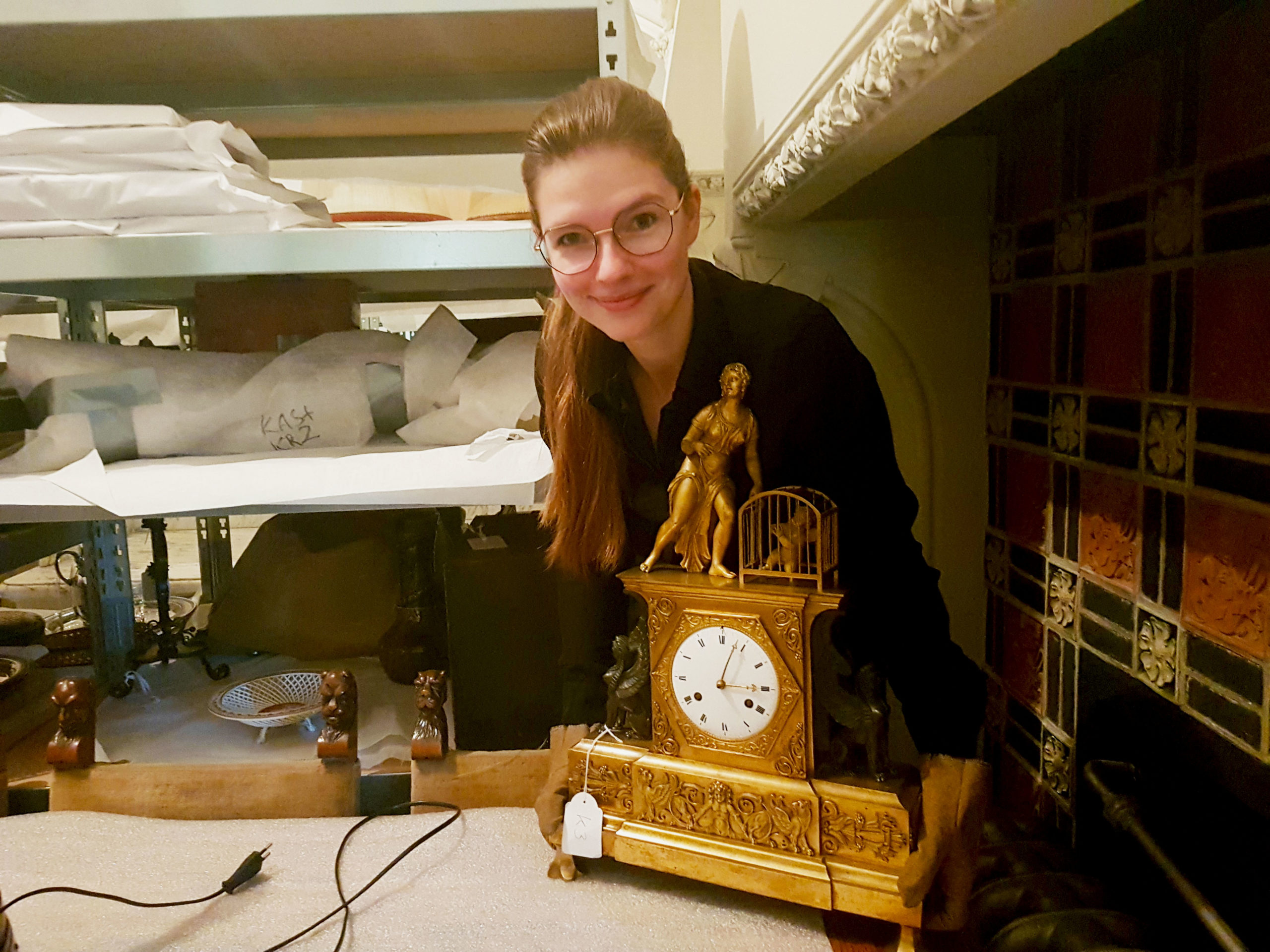Treasure Search with Kimberly Letter
Kimberly Letter has been working in the Museum Affairs Department at Castle de Haar for 4 years. She takes care of the collection, together with a group of volunteers. For Kimberly, collection management feels like treasure hunting: "You get to places where hardly anyone is allowed. You have things in your hands that no one is allowed to touch. You open doors and drawers that are actually closed. It always feels special!"
Kimberly talks in her blog about all that is involved in her special job.

Climate Control
Managing the collection also includes keeping an eye on the climate. Kimberly sometimes prefers to place objects in a particular room, but because of the climate, that doesn't always work out! "We don't have a climate control system and can only turn the heating on and off. To know what climate is desired, we look at the material of an object. After all, a fluctuating climate can cause damage and must therefore be closely monitored."
Our pets: from insect to bat
Insects can also harm the collection. "We have a lot of textiles in the castle, which insects like to nest in. Throughout the castle are between 300 and 400 monitors with pheromone. We then find moths, carpet beetles, spiders and fringe tails in these traps. We note this down and so we get a nice overview of which animals are where. If you find a lot of vermin somewhere, it means that there is a fireplace in that room. Sometimes you then have to vacuum the object out as much as possible, and sometimes a (small) object is packed airtight and put in the freezer for two weeks. In this way, we hope to keep reducing the population and protecting the collection!"
We also have pets in the weather corridors: bats. This is not a problem, according to Kimberly, because there is no collection here. "There is no monitoring here because we don't want to accidentally catch bats. Bats are protected animals!"
Elephant leg hair
Every year, every closet is opened at least once, which means Kimberly knows exactly what the castle holds. However, when Kimberly was just new to De Haar she was still sometimes surprised: "I remember pulling open a cabinet and seeing an elephant's leg there! I thought: is this real? When I took it out of the closet, I felt the hairs poking through my glove and came to the conclusion: yes this is real, haha!"
Pursuing the ideal image
Kimberly has certain expectations about how other museums handle the collection and likes to pursue this ideal image. "It doesn't work here like it does at the Rijksmuseum. At Castle de Haar you have to be able to communicate well, listen to other departments and include your own knowledge in that." To requests, Kimberly prefers to reply, "Don't do that!", but she also finds it a challenge to look for the ideal middle ground for all parties, exhibitions and the collection.
Our biggest nightmare
It's everyone's worst nightmare: dropping a collection item. Kimberly indicates that, fortunately, this has never happened to her. However, that doesn't mean it can't happen. "You only have to trip once! I always think 10 times before I go from A to B." Damage does happen. "The castle has obviously been a residence for 100 years and you can see that. That's not surprising, because at home you drop something sometimes too! We try to prevent new damage as much as possible. For example, you never lift a suitcase by the handle and a cup by the ear."
A valuable object does not have to come with an expensive price tag
Of course we are all curious about Castle de Haar's most valuable product! The most precious objects in the castle are the tapestries. There are very few of them worldwide and our tapestries are still in very good condition. According to Kimberly, however, valuable goes beyond a high appraisal value: "An object can be valuable because of the story behind it. The more you know about something, the more valuable the object becomes. What makes Castle de Haar's collection valuable is the ensemble. The tapestry is very valuable, but a crazy vase the family bought somewhere and now valued at 6 euros is just as much a part of it. I will treat the vase with equal care."
Learning from visitors
Kimberly continues to learn new things at Collections Management. So too from visitors. "We had an exhibit with some kind of walking stick, which we didn't know much about yet. Until a visitor suddenly told us, "If you pull that open there's a point in it!" "Well, when I have something in my hands, I don't go around trying to see if it can come apart! We investigated further and what turned out: you can indeed take the object apart. It is a Makila. If you take the handle off this, there is a metal tip (weapon) underneath. We are still learning every day!"
Do you also know more about certain objects? Come discover the collection at Castle de Haar!
